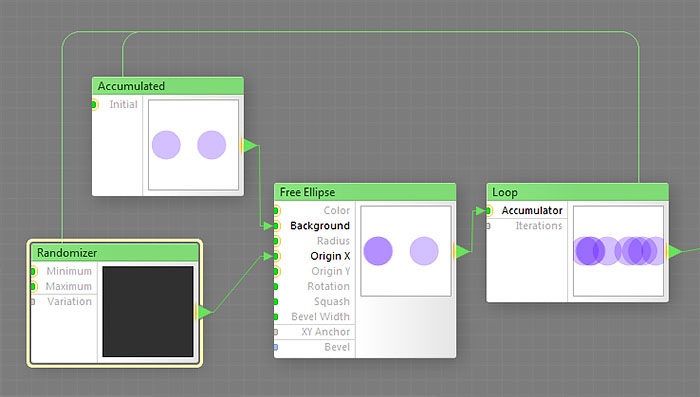
The optional Randomizer slave component of a Loop outputs a normalized random value (converted to color) that is unique for each loop iteration. Multiple Randomizers can have different Variation settings (random seeds). This component can output HDR colors.
This slave component must be connected to the subtree of its master's Accumulator input through a subtree of components, not directly. The connection between this slave component and its master Loop component must not be routed through any bitmap-based components.
For general information about slave components, see Slave components.
Minimum and Maximum: Map Input (HDR)
These inputs define the color range of the Randomizer output. Technically, they are used for converting the normalized internal random number generated for each Loop iteration into a color by using this number as a percentage of interpolation between Minimum and Maximum colors. These inputs can accept HDR colors.
Variation: Numeric Input
Technically known as random seed, this input provides a starting value for generating random numbers for each loop iteration. Two copies of Randomizer with identical Variation setting will produce the same internal per-iteration random numbers, though their output color may be different if their Minimum and/or Maximum colors are different. The per-iteration random numbers are also affected by the global Variation value. For more information, see How Variation Works.
Iteration (preview):
This slider allows you to preview the output of this slave component for any loop iteration, which is useful for creating and debugging the loop subtree. The values of the Iteration (Preview) sliders are synchronized across all slave components of Loop. The maximum value for this slider is defined by the Iterations input of the master Loop component.
Technically, this slider defines the output of the slave component in situations when it is sampled by any component which is not its master.